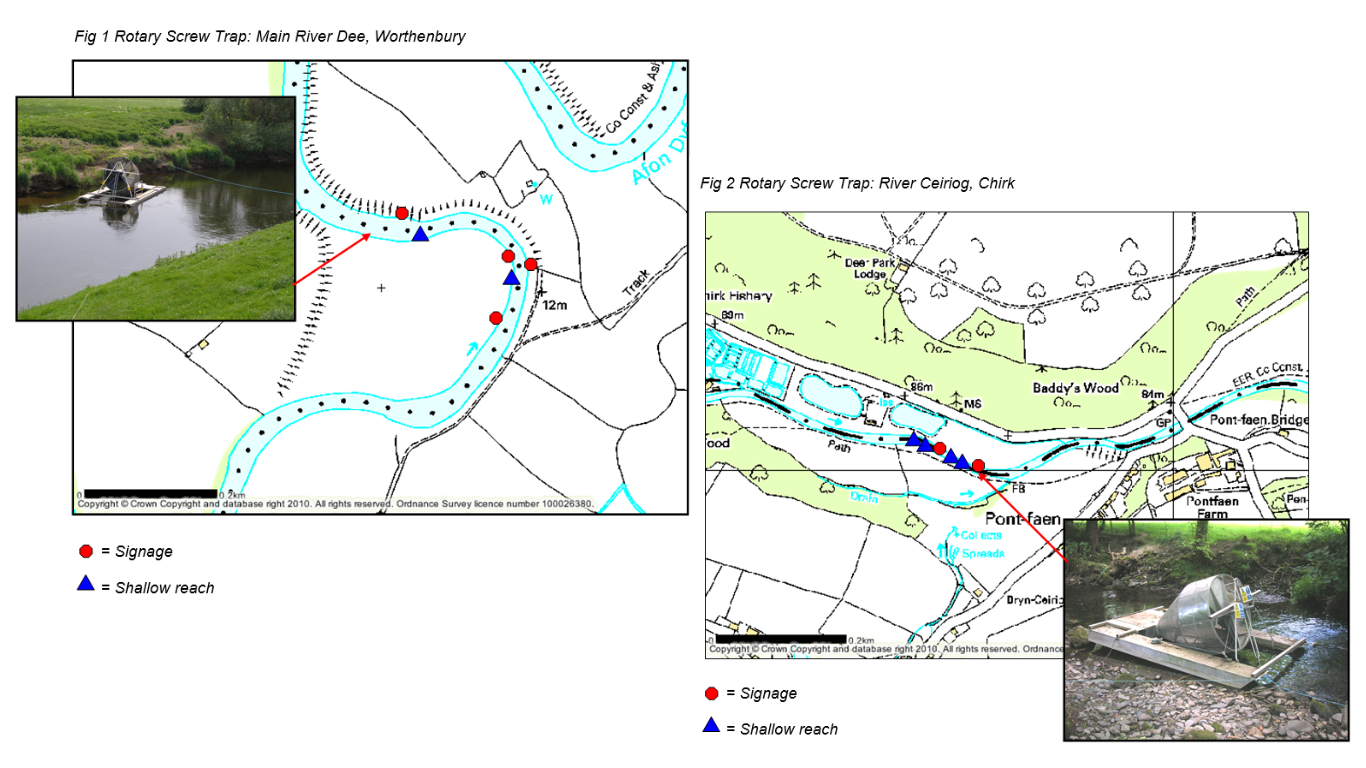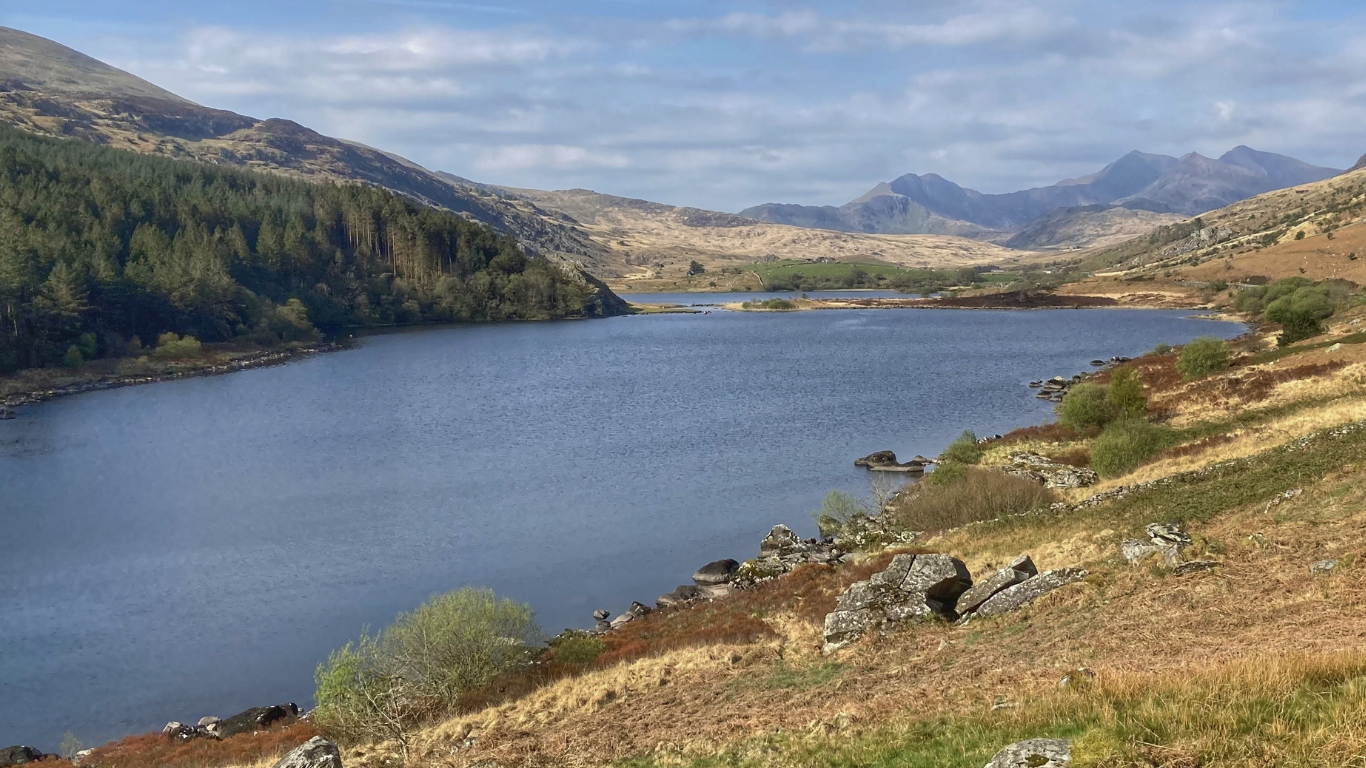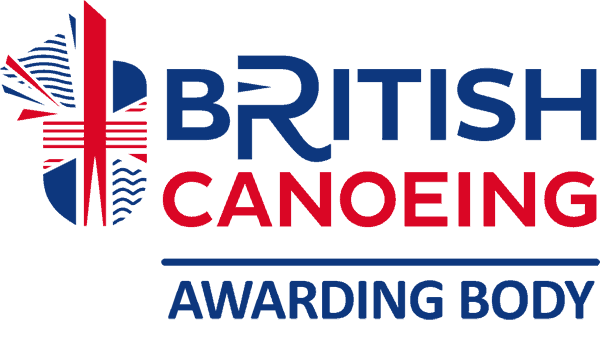Rotary Screw Traps (RSTs) are temporary fish traps used to capture young salmon and sea trout on their journey to the sea. This note informs canoeists and other river users where and when they may encounter these in-river structures.
In Wales, RSTs are operated at two sites in the River Dee catchment, North Wales: One on the main river at Worthenbury (SJ 41646 47503) and the second on a tributary, the River Ceiriog, at Chirk (SJ 27673 37007).
These traps come in various sizes but all consist of a rotating cone-shaped drum mounted between two floating pontoons (see pictures 1 and 2 at the top of this page). Operation involves the positioning of each trap in the main body of the flow where the drum is lowered into the water until half submerged. Water flowing through the mouth of the drum causes it to rotate by acting on an internal vane. The same vane moves any fish which enter the drum to the rear of the RST where they are delivered into a holding box for tagging and release.
At both the Worthenbury (Picture 1) and Ceiriog sites (Picture 2), the RSTs are fished only in the spring/early summer (March to June), and then just between the hours of dusk and dawn when they are manned. The use of warning lights and illuminated signs both on the banks 50-200m upstream and on the traps themselves, notifies river users of their presence.
When not in use, both traps are moved out of the main flow and close to the left bank looking downstream (see Figs). This leaves the main channel free of obstructions except for mooring cables, ropes and safety lines and these lie either on or below the surface or are held above head height.
At Worthenbury, a straight section of river of around 100m, with clear banks, lies immediately upstream of the trapping site and so gives good line-of-sight for river users. On the Ceiriog, the RST is also located in a straight section of river but with heavily wooded banks. In both case, bankside signage gives advanced notice of these structures. Similarly, both locations feature shallow sections upstream where canoeists can disembark (see pictures 1 and 2 at the top of this page).
If further information is required, please contact:
Bregan Brown; Tel: 07971515699; email: bregan.brown@naturalresourceswales.gov.uk
or
Sara Sherratt; Tel: 07977945407; email: Sara.Sherratt@naturalresourceswales.gov.uk
CONTACT THE MEDIA TEAM
If you have a story that would be of interest to the Paddle Cymru team please get in touch using the online contact form linked below or get in contact using one of our social feeds.
SIGN UP TO CEUFAD MAGAZINE
Ceufad is our quarterly magazine, covering everything that's important in Welsh paddlesport.
News Item Enquiry
We will get back to you as soon as possible.
Please try again later.









